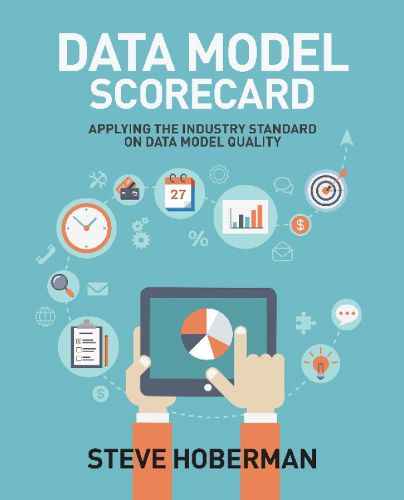Readings Newsletter
Become a Readings Member to make your shopping experience even easier.
Sign in or sign up for free!
You’re not far away from qualifying for FREE standard shipping within Australia
You’ve qualified for FREE standard shipping within Australia
The cart is loading…






This title is printed to order. This book may have been self-published. If so, we cannot guarantee the quality of the content. In the main most books will have gone through the editing process however some may not. We therefore suggest that you be aware of this before ordering this book. If in doubt check either the author or publisher’s details as we are unable to accept any returns unless they are faulty. Please contact us if you have any questions.
Data models are the main medium used to communicate data requirements from business to IT, and within IT from analysts, modelers, and architects, to database designers and developers. Therefore it’s essential to get the data model right. But how do you determine right? That’s where the Data Model Scorecard® comes in. The Data Model Scorecard is a data model quality scoring tool containing ten categories aimed at improving the quality of your organization’s data models. Many of my consulting assignments are dedicated to applying the Data Model Scorecard to my client’s data models I will show you how to apply the Scorecard in this book. This book, written for people who build, use, or review data models, contains the Data Model Scorecard template and an explanation along with many examples of each of the ten Scorecard categories. There are three sections: In Section I, Data Modeling and the Need for Validation, receive a short data modeling primer in Chapter 1, understand why it is important to get the data model right in Chapter 2, and learn about the Data Model Scorecard in Chapter 3. In Section II, Data Model Scorecard Categories, we will explain each of the ten categories of the Data Model Scorecard. There are ten chapters in this section, each chapter dedicated to a specific Scorecard category: Chapter 4: Correctness. Chapter 5: Completeness. Chapter 6: Scheme. Chapter 7: Structure. Chapter 8: Abstraction. Chapter 9: Standards. Chapter 10: Readability. Chapter 11: Definitions. Chapter 12: Consistency. Chapter 13: Data. In Section III, Validating Data Models, we will prepare for the model review (Chapter 14), cover tips to help during the model review (Chapter 15), and then review a data model based upon an actual project (Chapter 16).
$9.00 standard shipping within Australia
FREE standard shipping within Australia for orders over $100.00
Express & International shipping calculated at checkout
This title is printed to order. This book may have been self-published. If so, we cannot guarantee the quality of the content. In the main most books will have gone through the editing process however some may not. We therefore suggest that you be aware of this before ordering this book. If in doubt check either the author or publisher’s details as we are unable to accept any returns unless they are faulty. Please contact us if you have any questions.
Data models are the main medium used to communicate data requirements from business to IT, and within IT from analysts, modelers, and architects, to database designers and developers. Therefore it’s essential to get the data model right. But how do you determine right? That’s where the Data Model Scorecard® comes in. The Data Model Scorecard is a data model quality scoring tool containing ten categories aimed at improving the quality of your organization’s data models. Many of my consulting assignments are dedicated to applying the Data Model Scorecard to my client’s data models I will show you how to apply the Scorecard in this book. This book, written for people who build, use, or review data models, contains the Data Model Scorecard template and an explanation along with many examples of each of the ten Scorecard categories. There are three sections: In Section I, Data Modeling and the Need for Validation, receive a short data modeling primer in Chapter 1, understand why it is important to get the data model right in Chapter 2, and learn about the Data Model Scorecard in Chapter 3. In Section II, Data Model Scorecard Categories, we will explain each of the ten categories of the Data Model Scorecard. There are ten chapters in this section, each chapter dedicated to a specific Scorecard category: Chapter 4: Correctness. Chapter 5: Completeness. Chapter 6: Scheme. Chapter 7: Structure. Chapter 8: Abstraction. Chapter 9: Standards. Chapter 10: Readability. Chapter 11: Definitions. Chapter 12: Consistency. Chapter 13: Data. In Section III, Validating Data Models, we will prepare for the model review (Chapter 14), cover tips to help during the model review (Chapter 15), and then review a data model based upon an actual project (Chapter 16).